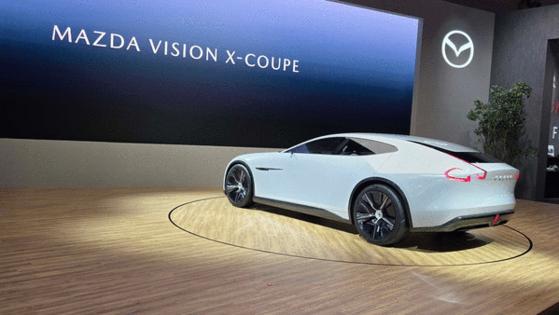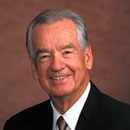Planet Japan: Highlights from the Tokyo auto show, and its different auto culture
Published in Business News
— The Japan Mobility Show is an ocean, 6,397 nautical miles, and a world away from the Detroit Auto Show.
The vehicle mix inside the Tokyo Big Sight convention center — and the streets outside — are as different from Motown's Huntington Place as the fish in the salted Pacific Ocean versus unsalted Lake Michigan. Except the whales are in Huntington Place.
Where the streets of Metro Detroit are dominated by huge Detroit Three pickup trucks and three-row SUVs, the byways of Tokyo are awash with tiny, boxy, so-called Kei cars. You won’t see the best-selling vehicle in the United States, the Ford F-150 pickup truck, because Ford doesn’t sell here — and rural pickups are small. The best-selling SUV in America, the Toyota RAV-4, is also a rare sight due to its large (by Japanese standards) size and price. Japan’s $4.25-a-gallon gas prices aren’t outrageous like Europe ($7 a gallon), but city streets are Euro-narrow.
Six-lane Route 20 runs thought the heart of Tokyo and is the city’s Woodward Avenue with a variety of supercars, European exotics and historic vehicles preening for attention. But most metro areas are a tangle of small roads and alleys with citizens crammed into tall apartment buildings.
Japan is deeply nationalistic, and the Top 10 brands here by sales are Japanese and right-hand drive. Only four non-Japanese brands stocked booths in Tokyo. Like U.S. shows, however, the floor was awash in EVs despite low Japanese consumer demand.
Here are highlights from the show floor — and the streets beyond.
1) Kei cars. These shoeboxes on wheels are made by every mainstream manufacturer. Encouraged by government tax policy since World War II, they are an affordable class of vehicle that fit a defined footprint and put out no more than 63 horsepower (usually from a three-cylinder gerbil wheel). Suzuki, nonexistent in the U.S. market, is the No. 2 automaker here thanks in part to prodigious kei car production. Its Tokyo show headliner? The electric Vision e-Sky Kei car.
In Tokyo drivers ride coach in kei cars next to First Class Porsches, Mercedes and BMWs. Go further out into Tokyo’s suburbs and small cities like Tochigi and Kei cars dominate thanks to their ability to shoe-horn into tight spaces, sidewalks, and garages.
China’s BYD made a splash here by introducing a Kei car, showing its commitment to the market. Eighty percent of Honda’s Japan sales are Kei cars like the N-Box. Its second-best seller? A small minivan called the FREED. Sightings of the Civic, Accord and CR-V (Honda’s No. 1 sellers in the States) are rare.
2) Chevy Corvete C8. Tokyo’s elite enjoy supercars like Ferraris, Mercedes-AMG GTs and Porshe 911s. Add the Corvette C8 to the list now that Chevrolet exports it from Kentucky with right-hand drive. Heads swiveled on Route 20 in downtown Tokyo as a red C-8 sauntered past.
3) Honda Super-One Prototype EV. If the U.S. market gets hot-hatch versions of the Honda Civic (the Si and Type R), then Honda decided Japan’s market deserves a performance version of its Kei car, the N Box. Honda calls it the Super-One and it’s a roomy, electric cutie.
The front-wheel-drive hot box debuted at the Japan Mobility Show, and though Honda has yet to publish specs for the Super-One, the little Rottweiler has a lot more grunt than the typical Kei car. That grunt gets audio in BOOST mode. GRRRRR! It most closely resembles the poor-selling Fiat 500e in the U.S. market, and Honda won’t export it.
4) Honda Prelude. What you will see in Japan and Detroit is the 2026 Prelude, a legendary performance car not sold since 2001. The new model is a sleek hybrid hatchback that shares its powertrain with the Civic Hybrid. Push the S-shift button and the Prelude will growl, but there is no manual transmission like the good ol’ days.
5) Jeep Wrangler. The best-selling U.S. model in the Japanese market, Wrangler is also an icon. Credit Jeep’s long history here beginning with the post-WW II occupation (Mitsubishi manufactured the original Jeep Willys here). Foreign makes are a hard sell, but Jeep has status — and Stellantis makes the effort to produce them with right-hand drive.
6) Mercedes-mania. Germany’s luxury brand is another icon with serious cred here. I saw everything from G-Wagons to CLAs to S-Class land yachts cruising Tokyo. Customers don’t care much for EVs — and government doesn’t mandate them — but they are fashionable among Japan’s elite, and Mercedes’ Japan stand was packed with EVs. Front and center was the gorgeous Porsche Taycan-beating, 1,341-horsepower AMG GT XX EV.
7) Subaru WRX STI. U.S. government emissions rules deep-sixed the beloved WRX STI pocket rocket, but with a new sheriff in Washington, Subaru appears optimistic about bringing it back. The STI hatchback concept looks ready to rumble.
Subaru didn’t tease powertrain specs, but its huge rear wing, swollen fenders and redesigned grille look production-ready. Subie’s best-seller in Japan isn’t an Outback, Forester or Crosstrek — it's a Levorg. Le-what? Levorg is a station wagon built on the expired Legacy’s platform.
8) Honda O-Series. Honda showed its commitment to an all-electric future — internally called the Second Founding — with a third model for its battery-powered, radical-looking 0-Series sub-brand. The 0-Series Alpha will be produced in India and sold in Asia.
Though it shares proportions with the gas-powered HR-V, Honda CEO Toshihiro Mibe said Alpha won’t be sold in the United States due to battery costs. Alpha’s Ohio-made siblings will be sold in the States: the O-Series SUV and Saloon sedan, the wildest looking EV this side of a Cybertruck.
9) Toyota Corolla. Corolla is the vanilla of compact cars — until now. Toyota is determined to change that image with a sharp-edged concept that debuted at the Tokyo show. It looks like a Polestar and Lamborghini had a baby — powered by a trusty ol’ Toyota hybrid drivetrain.
10) Mazda Vision X-Coupe. Mazda stunned with the Vision X-Coupe — a sleek, long-hooded show car featuring a hybrid rotary drivetrain. But the most important Mazda in show was the new 2026 CX-5 SUV. Ditching its cursed, rotary infotainment remote-controller for a proper touchscreen, CX-5 will be even more appealing as the best performance SUV in the compact class.
Coming soon to the USA.
©2025 www.detroitnews.com. Visit at detroitnews.com. Distributed by Tribune Content Agency, LLC.












Comments